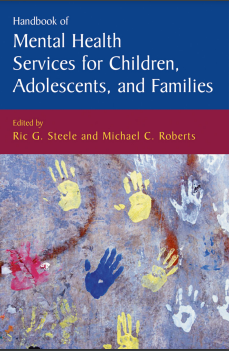
e-BOOK
Handbook of Mental Health Services for Children, Adolescents, and Families (Issues in Clinical Child Psychology)
In 1999, the American Psychiatric Association reported that approximately 13 million children (or about 18% of children in the United States) were in need of mental health or substance abuse services. This estimate is consistent with other recent reports of psychiatric or psychosocial morbidity (e.g., Costello et al., 1996; R. E. Roberts, Attkisson, & Rosenblatt, 1998), with reports of children with diagnosable or distressing conditions ranging from 16% to 22%, depending on type of condition, diagnostic specificity, and demographic characteristics. Although variations in measurement may account for some of the differences, the current estimates of children in need of services are significantly higher than those reported by Jane Knitzer (1982) in her landmark publication, Unclaimed Children. In this first comprehensive report on the state of child and adolescent mental health and services, Knitzer noted that, although the need is great, as many
as two thirds of the children with mental health problems did not receive services. Since the early 1980s, public and private initiatives have exerted considerable efforts toward meeting these needs. Nevertheless, the U.S. Surgeon General’s Office recently reported that less than one third of the
children with diagnosable mental disorders receive services in a given year (Department of Health and Human Services, 1999). The purpose of this chapter is to introduce the historical and contemporary influences on mental health service delivery, and to characterize the range of services that are available to children, youth, and families—many of which are represented in the chapters of this volume.
Ketersediaan
| 121 | 362.2 083 0973 | Website | Tersedia |
Informasi Detail
- Judul Seri
-
-
- No. Panggil
-
362.2 083 0973
- Penerbit
- 2016 : Kluwer Academic., 2016
- Deskripsi Fisik
-
421 halaman
- Bahasa
-
Inggris
- ISBN/ISSN
-
0-306-48561-3
- Klasifikasi
-
362.2 083 0973
- Tipe Isi
-
text
- Tipe Media
-
computer
- Tipe Pembawa
-
online resource
- Edisi
-
-
- Subjek
- Info Detail Spesifik
-
-
- Pernyataan Tanggungjawab
-
Michael C. Robert
Versi lain/terkait
Tidak tersedia versi lain
Lampiran Berkas
Komentar
Anda harus login sebelum memberikan komentar
 Karya Umum
Karya Umum  Filsafat
Filsafat  Agama
Agama  Ilmu-ilmu Sosial
Ilmu-ilmu Sosial  Bahasa
Bahasa  Ilmu-ilmu Murni
Ilmu-ilmu Murni  Ilmu-ilmu Terapan
Ilmu-ilmu Terapan  Kesenian, Hiburan, dan Olahraga
Kesenian, Hiburan, dan Olahraga  Kesusastraan
Kesusastraan  Geografi dan Sejarah
Geografi dan Sejarah